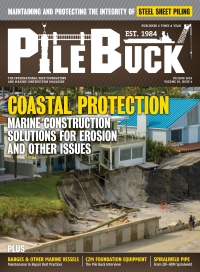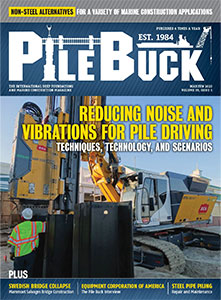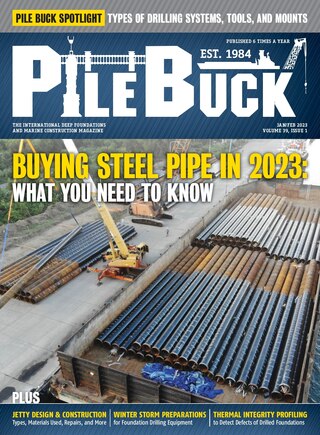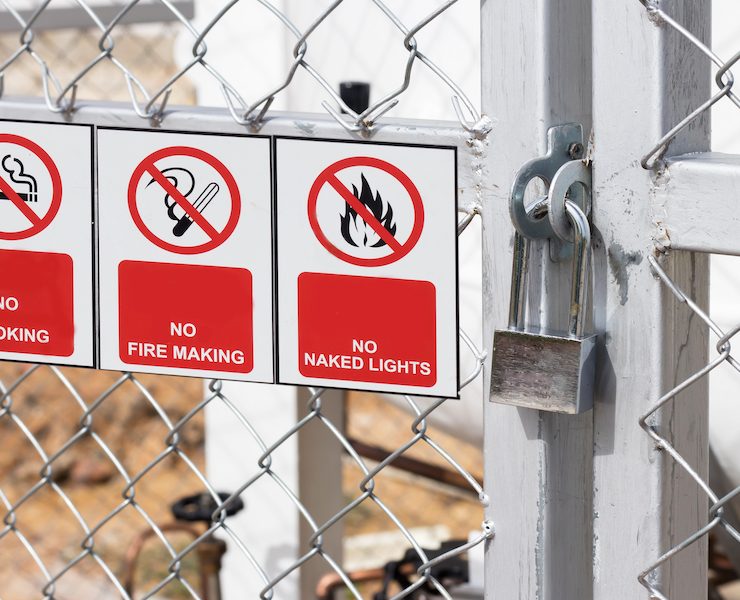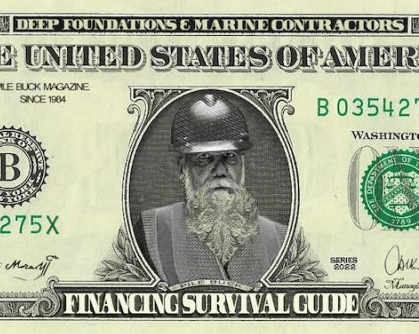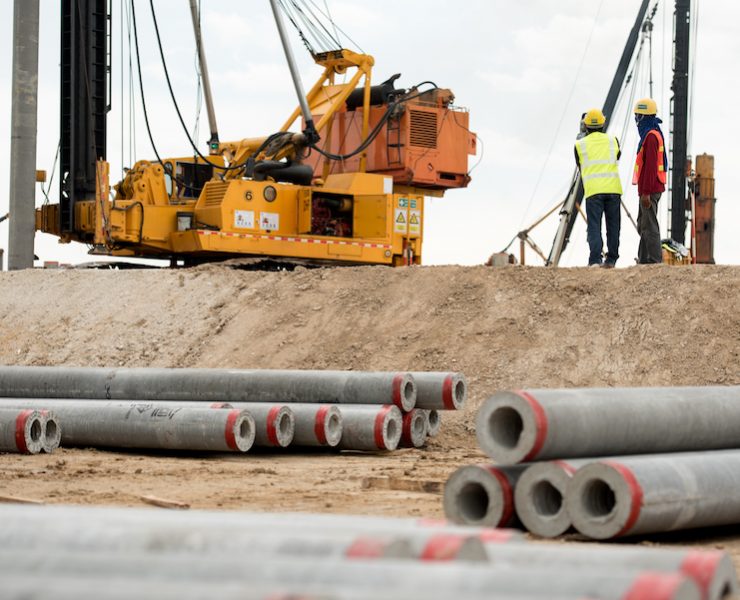Retooling Old School Business Success within Today’s New Technologies and Challenges
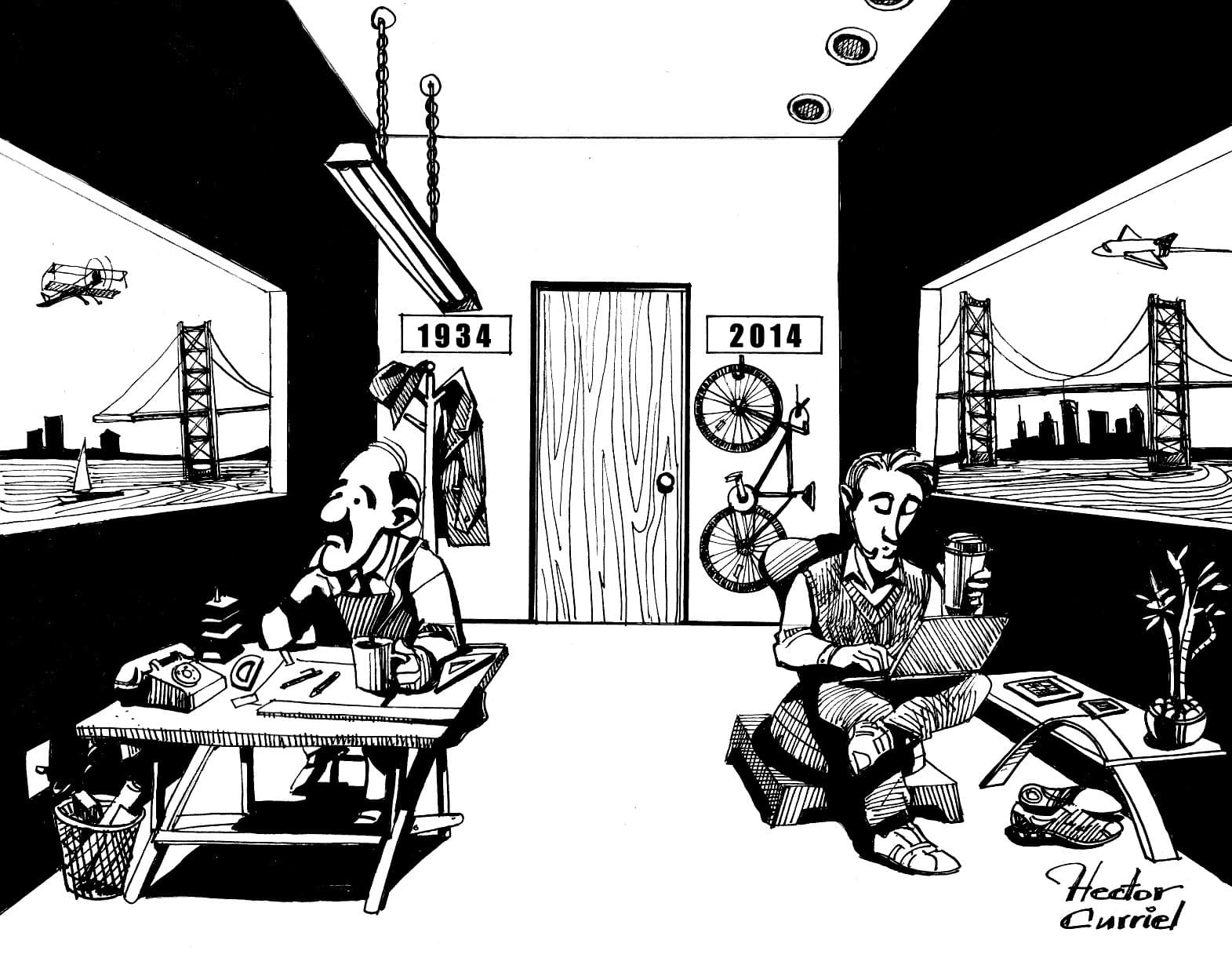
Catching The Fish By Moving To The New Fishing Holes
BEN C. GERWICK, AND THE OLD SCHOOL DUSTED OFF AS TODAY’S NEW INNOVATION IN PILE DRIVING
This article is about the business side of the pile driving company — making it in today’s “faster, better, cheaper, safer” project paradigms. Those paradigms challenge the Contractor to rethink his business. But some old school lessons are right there for the taking, and yes, as Shakespeare wrote in Merchant of Venice, it is about “First, let’s kill all the lawyers”. Or at least put an end to the legalistic, risk adverse way of the last 70 years — no longer a competitive approach to national or construction industry success.
INNOVATORS MAKE IT, AND NO ONE BEATS THE HOUSE
I worry — I worry like all of us about how our business climate is a shake out — innovators make it, and great companies built on bedrock “do it right every time” principles of hard work and loyalty, if they fail to move with the market, just might be at risk. And the risk? Ironically, their own success suggests they can beat the house by just doing it the same way it’s always worked. No one beats the house.
“The house” of course, is the long term direction of the economy. In particular, the re-focus in construction to hybrid public-private and creating financing, to design build and alternative foundation technologies, to emissions controls graveyarding the old cranes, emerging labor outsourcing, and succession planning that invites companies to follow “movement” with the economy to focus on “user groups” and their needs.
Movement is quite different than “change”. Movement would mean, the fish are no longer biting at my favorite fishing hole; I must find my food downstream and re-study my survival like any instinctive hunter. We must hunt to survive.But it’s no longer simply about hunting for new projects and clients; it’s hunting for your innovation style that will niche you to emerging owner and design approaches that value contractors who “team think” with them, and go beyond traditional “design/bid/build” project delivery thinking.
As corporate counsel to several pile driving contractors I have the privilege to hear from dedicated management “the big picture” presented beyond the day to day operations, safety manuals, contract terms, insurance issues, claims and so forth. By far the most exciting and scariest part of business outlook today is innovation, and change management.I see it daily. As Henry David Thoreau once wrote about the Industrial Revolution, “Gentlemen, we do not ride upon the railroad; it rides upon us.”
This new railroad, the internet, iPhone and iPad, it rides hard too, impacting all facets of the “brick and mortar” economy, including Construction. For good or bad, innovation means, be a step ahead, or get run over by that runaway train. But maybe, this breathes life back into some old school, handshake era construction management lessons, from the likes of Ben C. Gerwick, the renowned bridge and foundation engineer and great innovator.
BEN C. GERWICK AND INNOVATION ENGINEERING
In turns out, this “new” stuff may really be “the old stuff” redressed up with new fancy labels. Ben C. Gerwick, in his biography “A Bridge Beyond” and elsewhere, pointed out correctly that in the “pre-litigation” era of the Golden Gate and Bay Bridges in San Francisco, and many other projects in the first half of the 20th Century, innovative construction was the norm. The challenges were new, technologies were changing, and the owner, engineer, contractor and subcontractors worked the problem as a team. Today, we call that “Integrated Project Management”. In the bygone days, it was called being practical, working from a place of business trust, and getting it done. There was no “litigation phase” to big projects, just the hard hat ceremony, and congratulations for a job well done.
Well, in new clothing, those bygone days are back. It’s different though — when going back to the old ways, it may feel like you are doing something wrong when venturing past the safety net of “my fault, your fault” risk management, prime contracts thick like phone books, and your insurance broker and surety are on speed dial for “don’t do it” advice. Today, it no longer works to address project challenges “tag you’re it” risk allocation basis.
Actually that never worked, but it did make a lot of construction consultants, lawyers, mediators and arbitrators, damn well off. Today, with the economy screaming change, there is promise for a happy return to the older approach — make it happen and business rewards happen. Don’t shoot all the lawyers — just put them on cryofreeze for a bit, and redefine the business as business, not a punchlist of legal risks and red tape.
THE CONTRACT IS NOT A TOOL TO DO THE WORK OR GET THE JOB — IT’S JUST A TO DO LIST
In law, we sometimes say, a contract is something you look at when you no longer get along. Today, owners expect more — not so much for less, but that no one sits on their heels.Owners want the entire team to be problem solvers, bean counters, and engaged in “design thinking” — today’s new mantra coming out of the high tech and internet sectors. The real tooling is your innovation style, wed to basic business values and trained habits based on your mission. Know your real mission, the rest follows.
REAL LIFE EXAMPLES IN PILE DRIVING OF CHANGE MANAGEMENT AND INNOVATION ENGINEERING
A few concrete examples on how market movement is leading to adaptation in pile driving. AutoCAD and electronic project design exchange means everyone can be an engineer, or use engineering thinking. Transparency brought on by the internet goes beyond flattening the world — it flattens the rules of contract privity. No longer is information flowed down and up a contract chain of command by letters — now, its real time shared with everyone in project emails. Subs have a seat at the table again; Ben C. Gerwick’s construction management business model has rejoined us. The industry did not provoke that change; the movement to electronic communication went back to a “meeting room” approach, before telephones created the need for fewer meetings. A good thing. Good meetings make for good construction.
Another move I have seen in the last 10 years is a real shift in recruitment of foreman and superintendents, focusing on management skill sets of teaching and engineering/construction management, over seniority and experience. Its happening, and its led in many instances to a different looking workforce, and one less insular, less “live by the Code” in mentality, and drawing from non-piling management experience. More lateral hires from prime contractors, but also from engineering firms, educators, and the military. Part of this is due to the near end of family legacy recruitment, where the son automatically followed into the profession of his Father, proudly. That son is now just as likely to be at MIT inventing a new video game, a pilot, an engineer — thanks in part to many Industry Foundations like AGC, Beavers and Moles, and DFI who provide scholarships to college students seeking to pursue construction management and engineering degrees. A good thing, and a change all around.
Another example of industry movement is the use of alternative piling methods not due to risk, but for the branding of the owner. In my neck of the woods, Google, Yahoo, Apple and Oracle are busy building, building, building. They bus their employees to work, and have play areas, gyms and restaurants at the workplace and built in downtime — a modern re-do of the old “company town” for the steel mill.These firms know their neighbors buy their products and do not want to build and see reduce sales because the customers remember the noise. They are hypersensitive to the market; all their activities must match brand.
A fourth move is the creation of a safety division as a profit center, rather than as just a form to fill out by the foreman after the tailgate meeting. In the recession economy, profit is made not by growth but by innovation and reduced overhead. A key profit center in the last 5 years for my clients has been safety. By having safety redundancies and a “safety first” culture, money is saved on projects, on insurance; morale and employee retention is high meaning more productivity, less cost. Even better, with more public companies (refineries, sports stadiums, etc.), requiring drug testing, team interviews and spotless safety records, “fake safety” does not get you the job; and real safety gets you both the job, and an annuity relationship – not just one World Series Ring, but a Hall of Fame level relationship with your “fan” — the loyal repeat customer.
This is even happening in public works, where the sometimes controversial “Lend Lease” approach around low bid statutes, lets owners hand select the contractor they trust, not the low bidder they don’t. The times, they are a changin’.
OVERCOMING RESISTANCE TO “MOVEMENT WITH THE MARKET” INNOVATION
Why is movement with market so difficult? Lots of reasons.Chief among them is that it’s hard to believe any marketplace shift or downturn is permanent or unveiling a new paradigm. We hunker down for a long cold winter. We stick to that what brought us here, brought us success in the past.We let our success get in the way.
Call it movement rather than change. Stop the voice in your head, “we must change.” Instead, “we must move” — to where the food has moved. But how?
The pile driving industry is at a exciting, critical and innovative crossroad, when it comes to cost, competitiveness, and leading the emerging re-thinking surrounding foundation engineering and project delivery methods. No longer is it simply, “design/bid/build.” Owners and engineers want the contractor to be pro-active partners in new solutions. If we think of change as instead, movement — tracking and hunting for food, or feeding the tiger before he eats us — it’s no longer a dump on our tried and true ways; it sells itself.
How can the pile driving industry adapt to today's challenges and new technologies?
The pile driving industry can adapt by embracing innovation, moving away from outdated legalistic approaches, and focusing on proactive partnerships with clients for new solutions.
What are some examples of movement and innovation in the pile driving industry to stay competitive?
Examples include embracing electronic project design, shifting recruitment focus to management skills, using alternative piling methods for branding, and turning safety into a profit center, showcasing the industry's adaptability to market changes.









